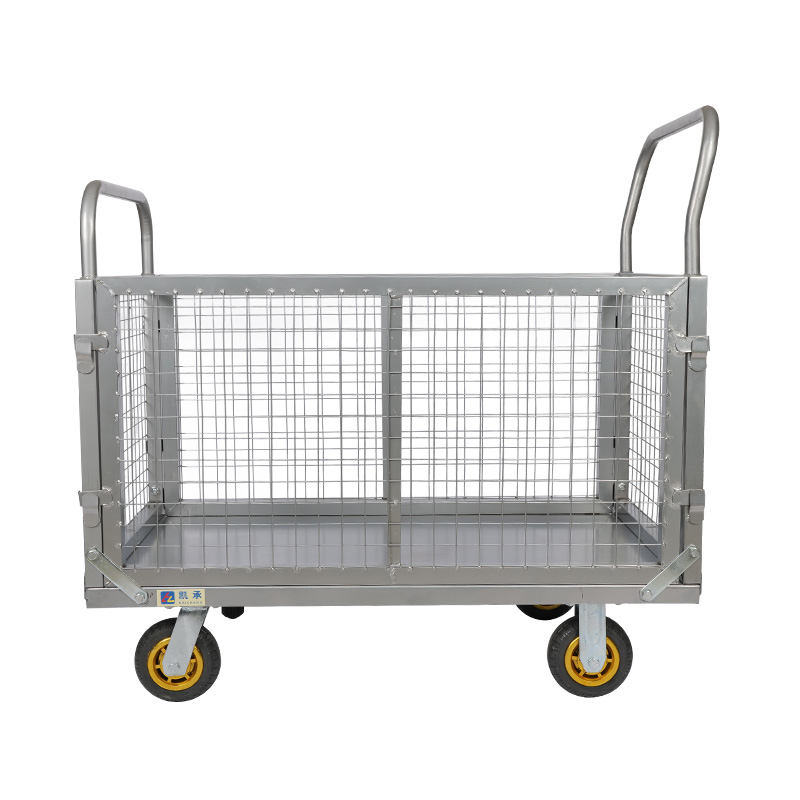In the fields of construction, municipal engineering, security enclosure, etc., Metal Fence Logistics Transport Vehicle is a special vehicle specially used for efficient transportation and rapid deployment of metal fences. It not only improves the safety of the construction site, but also significantly improves the efficiency of material transportation. Therefore, when choosing a metal fence transport vehicle suitable for engineering needs, comprehensive considerations should be made from the following aspects:
Clearly define the type of project and the use scenario
Different types of engineering projects have different requirements for metal fences. For example:
Urban road construction: small or medium-sized transport vehicles that require frequent movement and easy loading and unloading;
Large infrastructure projects: such as high-speed railways, bridges, etc., may require special vehicles with large capacity and high load-bearing capacity;
Temporary security enclosure: such as exhibitions, major events, etc., require highly maneuverable and quickly deployable transport equipment.
Judging whether it is necessary to have functions such as on-site rapid loading and unloading and modular stacking according to the actual working environment is the first step in choosing a suitable vehicle model.
Evaluate the carrying capacity and loading size of the transport vehicle
Metal fences are usually steel structures with a large unit weight, so the maximum load capacity and cargo box size of the transport vehicle must match the fence specifications. It is recommended to select the appropriate chassis tonnage (such as 3 tons, 5 tons, 8 tons, etc.) according to the number, length and height of the fences that need to be transported daily, and ensure that the cargo box space can effectively accommodate the standard fence modules to avoid safety hazards caused by overlength and overheight.
Pay attention to loading and unloading methods and ease of operation
An efficient loading and unloading system can significantly improve construction efficiency. Common loading and unloading methods currently include:
Manual handling: suitable for small construction sites, but low efficiency and high labor costs;
Forklift loading and unloading: requires matching forklift equipment, flexible but dependent on external resources;
Self-unloading/automatic lifting platform: equipped with hydraulic lifting device, it can realize single-person operation and fast loading and unloading, improving work efficiency;
Side-flip or rear-flip cargo box: suitable for batch unloading, especially for deployment along highway construction lines.
Give priority to loading and unloading systems with high automation and easy operation, which will help reduce labor intensity and speed up construction progress.
Investigate the maneuverability and passability of the vehicle
The driving performance of the transport vehicle directly affects its adaptability in complex construction site environments. The following points should be considered:
Whether it has good off-road performance to cope with unpaved construction sites;
Whether the turning radius of the vehicle is suitable for narrow areas;
Whether it supports stable driving in various terrains, such as ramps, muddy roads, etc.;
Whether there are auxiliary driving functions such as reversing images and GPS positioning to improve safety and control convenience.
V. Consider maintenance costs and after-sales service guarantees
As a professional vehicle, the post-maintenance of the metal fence transport vehicle is equally important. When purchasing, you should understand:
Whether the manufacturer provides a complete warranty policy;
Whether the spare parts are supplied in time;
Whether there are localized service outlets;
Whether the fuel economy and maintenance costs are controllable.
Choosing a brand with a good reputation and perfect technical support will help reduce long-term operating costs.
Whether it complies with local traffic regulations and environmental protection requirements
Before the transport vehicle is put into use, it must comply with the relevant regulations on license plate registration, annual inspection, emission standards, etc. in the region. In addition, with increasingly stringent environmental protection policies, new energy or low-emission models are gradually becoming a development trend, which is worth considering in long-term planning.
To choose a Metal Fence Logistics Transport Vehicle that truly suits your project needs, you need to conduct a comprehensive evaluation from multiple dimensions such as project nature, carrying capacity, loading and unloading methods, maneuverability, maintenance costs, and compliance. Only by combining actual application scenarios and scientifically selecting models can you improve construction efficiency while ensuring transportation safety and operation quality.


 English
English Español
Español



